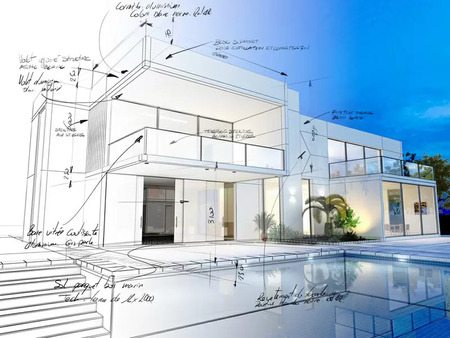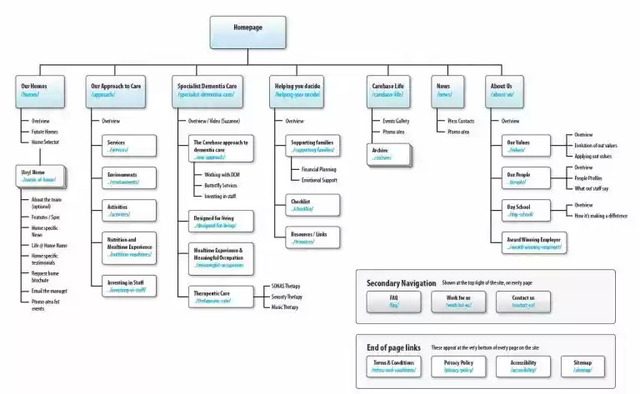Before you spend all the time, money and effort you've laid aside for SEO, consider this: your site architecture might be negating any effort you spend in offsite SEO. In fact, poor site architecture could be causing you to throw away your money. You've got to be sure that your site is set up in a way that will not only bring in visitors but keep them there long enough to generate a lead, make a sale, sign up for your newsletter or become an active member of your community -- and site architecture is key to those goals!
What Exactly Is Site Architecture?
Ten or more years ago, there were very few ways to set up a website. Perhaps you had directories with relevant names, or your directories may not have been named well. All your files might have existed in your root directly, and you may have used file names and page titles that only made sense to you. However, the Internet has come a long way from that point, and how you set up your site is important.
Site architecture is a way to group and organize content on your site which encompasses URLs, directories, file names and navigation. The way you set up your site ensures that both computers and humans can find everything on it with ease. But if you do site architecture wrong, you're actually make it more difficult for your readers and search engines, which could seriously hurt your bottom line!
One of the biggest components of site architecture is the number of clicks it takes to achieve a task. Once upon a time, webmasters assumed that readers would click infinitely, but the opposite has proved to be true. If it takes too many clicks to find an article, check out from your store or sign up for a newsletter, your readers might simply leave your site. This is especially true with mobile users.
Although traditional site architecture uses nested directories in a practice now known as silos, this required more clicks to find pages. The pages further down the silos had fewer links to them than the articles further up the silo. While grouping your pages in directories named with keywords is helpful for SEO, you'll want to ensure you're not making them click too many times to find the "bottom" pages. Think of ways you can reduce clicks to any page on your site to three to four clicks at most without decreasing the usefulness of silo structure.
Keyword Research in Relation to Site Architecture
Although Google no longer favors sites simply because the domain contains a keyword, choosing page URLs with your relevant keywords will certainly help your users as well as crawlers. Good keyword research will indicate topics & themes to be included in your site architecture and page URLs. This URL structure will also help you manage content in respective directories and sub directories.
Before you can give your files, directories and links their proper names, you have to determine a method for naming that will benefit your site. These are the words that searchers would use to find your business. They revolve around industry, services, products and sometimes location if you serve a specific geographic area. But if your website exists mostly to educate visitors, the appropriate keywords will differ than if you're selling something to consumers.
Many webmasters and SEO experts become too focused on short keywords. Yes, they're easier to think of, but there's also more competition for those short keywords coming from similar sites and businesses. This is why long-tail keywords, which are longer keyword phrases, can be so beneficial. In comparison, long-tail keywords have less competition and might get fewer clicks, but visitors who use them are more targeted likely to convert to customers.
Using Keywords in Directories, File Names, and URL Structure
Once you identify keywords, you'll want to use them in page URLs, categories, post titles, anchor text, file names and image alt attributes, among other on-page locations that benefit SEO. This ensures that your visitors know exactly what to expect from the address of the page. Search engine robots use these same cues.
It's important for more than just your pages to use keywords, however. Images, videos and even archives that you provide for download should use human-friendly keywords. So you'll want to take the time to rename videos and pictures from the automatic names that your camera gives them. Anything that you download from the Internet and upload to your website might need to be renamed, too.
For example, the popular blogging platform WordPress offers several options for formatting your links. However, the default format uses post and page IDs, which are virtually useless to Google and your visitors. A URL such as http://yourdomain.com/successful-site-architecture-seo is preferable to http://yourdomain.com/?p=123 because your visitors know what to expect simply by looking at the address bar.
Link to Your Own Content/Internal Links
By now, you're intent on enabling Google and other search engines, not to mention your visitors, to find all your content. In the past, SEO has focused heavily on backlinks -- links from other sources -- but this isn't the only way to do that. In fact, linking to your own content, a process known as internal linking, is just as important as external back-linking. Internal linking helps to spread link value on your own site, but it also ensures that no content becomes lost and impossible to find for crawlers as well as your visitors.
What Does Bad Architecture Look Like?
You've read plenty of advice to help you structure your site in a way that's useful to readers and beneficial to your search engine optimization efforts, but how do you know if you're using it right? Is your current site architecture failing you? Here are a few examples of poor site architecture:
- Site directory contains numbers and not user friendly words. Example – YourSite.com/shoes/mens vs. www.YourSite.com/1234/shoes-page
- It takes more than three or four clicks to get to any page from the index
- Images and files do not use keywords in names, images lack alternative text
- Small sites have unnecessary directories that cause confusion for users
- There are too many links on the home page or navigation
- Navigation changes between pages or sections on the site
- Pages exist that aren't linked to from multiple sources
- Page URLs misuse long-tail keywords, which can be vital to a site's success
- There is no sitemap (page) or, if there is, the site architecture cannot be adequately shown in the sitemap
In fact, devising a site map is one way to quickly locate the weaknesses in your site architecture. If it takes more than three clicks to get to a page on your site, a sitemap will quickly illustrate this. Not all loopholes will be revealed with this method, but it’s one place to start! If you want your website to stand out from the competition, you'll need more than "About Us" and "Contact Pages." In fact, when you become comfortable creating strong site architecture, you might look for a reason to use it. Adding a blog to your eCommerce website, for example, is one way to use and improve those skills while boosting your site's SEO. But even if your website is small, you'll be remiss if you don't pay attention to site structure and what it can do for SEO.



